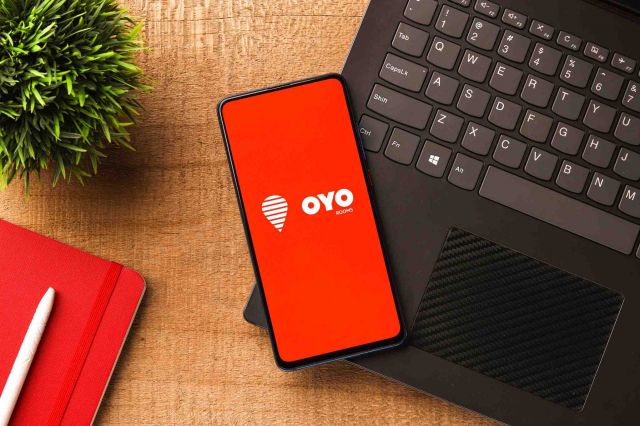Pattern Group IPO: how to trade Pattern shares

Learn about Pattern Group and its completed IPO, the factors that affect its share price, and how to trade Pattern stock via CFDs now that it has listed.
IPO stocks are often highly volatile, and early trading can involve rapid price swings and significant risk.
When is the Pattern Group IPO date?
Pattern Group, a US-based e-commerce accelerator, completed its initial public offering (IPO) in 2025. The company, headquartered in Lehi, Utah, listed on Nasdaq at $14 per share. Pattern's shares began trading under ticker PTRN, closing the first day up 11% at $15.63 (CNBC, 19 September 2025).
Pattern specialises in helping consumer brands expand sales across global marketplaces such as Amazon, Walmart, Target, TikTok Shop, and JD.com. Its proprietary technology manages pricing, logistics, advertising, and channel strategy for partner brands, allowing them to scale quickly in the fragmented world of online retail.
Key factors influencing the IPO timing included:
- E-commerce momentum: global e-commerce sales are projected to surpass $7 trillion by 2025, creating demand for Pattern’s services.
- Financial performance: the company reported revenue of $1.14bn in the first half of 2025, up 35% year on year, and net income of $47m.
- Capital requirements: proceeds support further global expansion and investments in AI-driven analytics.
- Market conditions: strong investor appetite for profitable e-commerce firms may have influenced the listing, particularly for companies offering infrastructure rather than consumer-only exposure.
- Exit for backers: Pattern has raised funds from investors like KSV Global and Knox Capital, who now seek liquidity.
Pattern has raised more than $1bn since its founding, with growth investors potentially capturing gains through the public listing.
What is Pattern Group?
Pattern Group is a global e-commerce accelerator that partners with brands to manage and grow their online sales. Unlike traditional agencies, Pattern often buys inventory directly from brands and then sells it across digital marketplaces, while providing the technology and expertise to optimise performance.
The company positions itself as a hybrid of distribution partner and technology platform, helping brands navigate the complexities of pricing control, cross-border shipping, and digital advertising.
Key milestones in Pattern’s history
- 2013 – founded in Lehi, Utah, by David Wright and Melanie Alder.
- 2015–2018 – early growth by partnering with consumer brands on Amazon marketplace management.
- 2019 – expands internationally into Europe and Asia; opens offices in London and Shanghai.
- 2020 – acquires multiple agencies and tech platforms to broaden its capabilities.
- 2022 – raises over $225m in funding to accelerate global expansion.
- 2023 – expands into social commerce platforms including TikTok Shop.
- 2025 – completes IPO, reporting strong revenue growth and profitability.
Pattern’s key features
- Marketplace management – Amazon, Walmart, Target, JD.com, TikTok Shop.
- Global logistics – warehouses in the US, Europe, and Asia.
- AI-driven analytics – optimises pricing, inventory, and digital advertising.
- Brand partnerships – works with 400+ consumer brands.
- Hybrid model – buys inventory while providing SaaS-style services.
Pattern’s unique selling point is its ability to control pricing integrity for brands. Counterfeit and unauthorised sellers are common on global marketplaces, but Pattern’s platform helps brands enforce consistent pricing and protect their brand equity. This makes Pattern appealing to premium as well as mass-market brands seeking to maintain reputation while scaling digitally.
Pattern now employs over 2,100 people across 24 global locations, including Lehi (Utah), London, Pune, Sydney and Hong Kong, giving it reach into North America, EMEA and Asia-Pacific. It serves a wide range of brand categories including health and wellness, beauty and personal care, home and lifestyle, pet, sports and outdoors and consumer electronics. This diversity reduces reliance on any single sector, insulating revenues from cyclical shocks.
How does Pattern Group make money?
Pattern’s revenue model blends distribution and service-based income.
|
Revenue stream |
Description |
|
Wholesale model |
Pattern purchases inventory from brands and resells it across online marketplaces, capturing retail margins. |
|
Service fees |
For some clients, Pattern charges for SaaS-based use of its analytics and logistics platform. |
|
Advertising management |
Revenue from managing ad campaigns on Amazon, Walmart, and social platforms, with brand partners funding advertising costs. |
|
International expansion |
Fees and margins from enabling brands to sell in new geographies. |
|
Add-on services |
Compliance support, payment solutions, and data analytics. |
Pattern’s model differs from traditional agencies because its skin-in-the-game wholesale approach ties its incentives to brand success. By directly buying and reselling inventory, Pattern assumes risk but also captures upside, driving both top-line growth and alignment with client performance. This hybrid model explains why Pattern’s revenue has scaled so quickly past $1bn in H1 2025.
However, Pattern faces significant concentration risk with a significant portion of its revenue dependent on Amazon's platform, creating potential vulnerability to policy changes or platform disruption.
Alongside wholesale margins, Pattern also sells access to its Pattern IQ analytics and technology platform on a SaaS basis. Logistics services – warehousing, cross-border fulfillment, and returns – provide additional revenue and embed Pattern deeper into its clients’ supply chains.
What might influence the Pattern Group live stock price?
Pattern Group's stock performance depends on both internal execution and broader market forces.
Macroeconomic and sector trends
The health of global e-commerce will strongly influence Pattern’s valuation. Continued growth in online retail favours Pattern, but economic slowdowns could reduce consumer demand. Exchange rate fluctuations also matter given its cross-border operations.
Company fundamentals
Investors will focus on Pattern’s revenue growth, net margins, and scalability. With over $1bn in H1 2025 revenues, Pattern already shows scale. The sustainability of profitability and efficiency of logistics will be key.
Competition & innovation
Pattern competes with agencies, SaaS providers, and distributors like ChannelAdvisor (acquired by CommerceHub in 2022) and Packable. Its ability to differentiate with AI-driven analytics and control over pricing will be critical. Failure to maintain innovation could see competitors gain ground.
Regulatory and governance landscape
E-commerce regulations are tightening worldwide — from Europe’s Digital Markets Act to India’s marketplace rules. Pattern must comply with data protection, consumer rights, and cross-border tax regimes, or face fines and reputational damage.
Index inclusion and investor flows
Entry into consumer or tech-focused indices could generate institutional inflows. Conversely, lack of visibility may keep valuation muted initially.
Brand perception and trust
Pattern’s value proposition hinges on being seen as a trusted partner by global consumer brands. Any reputational issues – such as disputes with partners or failure to deliver results – could quickly erode confidence and weigh on the stock.
Consumer sentiment and seasonality
Shopping holidays like Amazon Prime Day, Singles’ Day in China, and Black Friday in the US create spikes in sales volumes that benefit Pattern and its partner brands. At the same time, geopolitical issues such as tariffs, customs rules, or shipping disruptions could dampen growth in international markets.
Market sentiment and trading behaviour
As a profitable e-commerce platform, Pattern attracted strong IPO demand and closed its first trading day up 11% at $15.63. However, ongoing volatility remains likely if growth slows or if comparisons to giants like Amazon weigh on expectations.
You can keep your finger on the pulse of the markets with expert insight from our in-house analysts. Check out our news and analysis section for more.
How to trade Pattern shares via CFDs
Pattern completed its IPO on 19 September 2025, and its shares are now trading on the Nasdaq Stock Market under ticker ‘PTRN’. Trading its shares via contracts for difference (CFDs) allows you to speculate on its price movements – without owning the underlying stock.*
Remember: IPOs are volatile, especially in early trading.
How to get started
- Step 1: Choose a platformUse a trusted broker like Capital.com, offering access to thousands of shares, indices and more.
- Step 2: Open an accountProvide your personal details, verify your identity, complete a short suitability questionnaire, and set your trading preferences.
- Step 3: Add fundsDeposit using card or bank transfer. Start small, and manage your risk carefully.
- Step 4: Track Pattern’s performanceUse charts, technical indicators and price alerts to monitor the market and spot trading opportunities.
- Step 5: Go long or short with CFDsThink the price will rise? Go long. Expect a drop? Go short. Apply stop-loss** or take-profit levels to manage your trades.
*CFDs are traded on margin, and leverage amplifies both profits and losses.
**Standard stop-losses are not guaranteed. Guaranteed stop-losses incur a fee when activated.
Learn more about contracts for difference in our CFDs trading guide.
Which e-commerce and retail tech stocks can I trade?
Pattern completed its IPO on 19 September 2025 and is now trading on Nasdaq. You can trade Pattern Group (PTRN) alongside other listed companies in e-commerce and retail technology:
- Pattern Group (PTRN) – global e-commerce accelerator serving 200+ brands across 60+ marketplaces.
- Amazon (AMZN) – world’s largest online retailer and marketplace.
- Shopify (SHOP) – e-commerce platform enabling businesses to set up online stores.
- MercadoLibre (MELI) – Latin America’s leading e-commerce and payments platform.
- Alibaba (BABA) – major player in Chinese and global e-commerce.
FAQs
Who owns Pattern Group?
Pattern completed its IPO in September 2025 and is now publicly traded. Prior to the IPO, Pattern was privately held, with backing from investors including Knox Lane, Banner Capital, and other growth equity firms. The founders, David Wright and Melanie Alder, remain actively involved. Post-IPO, the co-founders retain a significant portion of shareholder voting power, along with institutional investors such as Knox Lane and Banner Capital.
How much is Pattern worth?
Pattern achieved a $2.4 billion valuation at its IPO, priced at $14 per share (Reuters, 19 September 2025). This valuation reflects its strong revenue growth and profitability.
When will Pattern IPO?
Pattern completed its IPO on 19 September 2025, listing on Nasdaq Stock Market under ticker PTRN. The company raised $300 million at $14 per share, the midpoint of its $13-$15 range (CNBC, 19 September 2025).
How can I buy Pattern shares before the IPO?
Pattern shares are now publicly traded on the Nasdaq Stock Market under the ticker ‘PTRN’. Retail investors can buy shares through any broker that offers US stock trading, or speculate via CFDs.
Will Pattern be available to trade as a CFD?
Pattern is now listed and available for CFD trading at brokers like Capital.com. This allows traders to speculate on both rising and falling prices, useful in the volatile post-IPO trading environment. CFDs are traded on margin, and leverage amplifies both profits and losses. High volatility can lead to greater potential losses.
Discover more upcoming IPOs
Stay informed on upcoming IPOs, market trends, and the newest trading opportunities

OYO IPO
